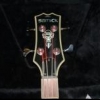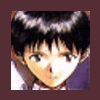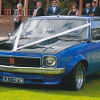Article description: How to install a set of UC Rear Disc Brakes on an LH or LX Torana
Category: Brakes, Wheels and Tyres
Date added: Jul 24 2008, 11:01 PM
Article starter: enderwigginau
Part 1: Bits and pieces needed to install UC Torana Rear Disc Brakes on an LH/LX Torana
Torana Fine Spline axles


Twenty-three splines as opposed to twelve on coarse spline axles. Besides being stronger than coarse spline axles, these will fit straight into an LH/X fine spline diff centre.

The bearing on the disc axle
Resting upon the axle retaining flange is the spacer required to use disc brakes. This spacer fits into the backing plate/calliper hanger, to hold the hub far enough out for the discs to not contact the backing plate and allow the callipers to fit over.

Backing plate and Brake shield
The backing plates are the calliper hangers. The spacer behind the bearing fills the depth of the plate. The Shields prevent too much outside contaminants (grit, stones and even water) from coming into contact with the rotor. Water can warp the rotors if cold water comes into contact with a hot rotor, and stones and grit can become lodged between the pads and rotor. Unfortunately, these shield can also trap heat in the brakes, and cause brake-fade under hard braking conditions. The brake line retaining bracket can be seen in the lower left photo.



Calliper
The UC Rear calliper (RIGHT HAND), with handbrake mechanism. These are shown in the "Pull from rear" UC orientation and must be removed and swapped left-calliper-to-right so as to pull from the front. These bolts also hold the retaining bracket for the handbrake cable. The brake line and bleeder are the TOP of calliper. A handbrake cable retaining bracket is held in place by three of the four bolts holding the handbrake actuator arms.


Part Two - Installing the UC rear disc
The first thing to do, if you don't already run a fine spline diff centre, is to swap them over. Pull the drums off the ends of the diff (Make sure the handbrake is off!). Using the holes in the axle hub, remove the bolts holding the backing plate of the drum brakes. Flip one drum over and place back over the wheel studs and put some wheel nuts back on a few turns. Now pull the drum out and hopefully after a couple of tries the axle will come out. Undo the brake line from the drum and gently bend out of the way. For now just place the loose drums under the car out of the way.
Mounting the backing plate

After removing the drum-brake backing plate, you mount the disc-brake backing plate straight onto the same points, making sure the caliper hanger holes are pointing towards the front of the car. This can be done with or with out the shield bolted onto the backing plate.

Now carefully insert the disc axle into the diff tube. When you feel it bump the diff centre, gently apply pressure while turning the axle. Once the splines are aligned it will slide right in. Make sure the axle flange has gone over the four axle retaining bolts. Using the holes in the axle hub, put the nuts on these bolts, preferably using locknuts so they can't vibrate loose.
Now you can push the disc rotor over the wheel studs.

At this point you can plumb in the calliper to the brake line, being careful not to tear the metal line as you adjust it. Push the free end of the flexible line through bracket on the rear of the shroud and then screw the main line nut into it.

Now mount the caliper on the hanger. Remember that the bleed valve is the top. Have you got the correct caliper for the side of the car you are on?? The nuts marked are where the handbrake cable bracket bolts on.

You should be complete. Hopefully it looks quite similar to this

In this picture you can seen the metal brake line. For a very professional job, get your hands on a flaring tool and shorten the line to a suitable, tidy length, replace the nut on the line and reflare.

Now you are at wheel mounting stage. Repeat on the other side of the car.

There is only one thing left to do now, and that is at the other end of the car. Be sure to place some paper or rags under the master cylinder to prevent paint damage. Unscrew the rear brake line from the rear master cylinder. Using a small drill bit, slightly smaller than the brake line, drill out the cup that holds in the drum brake line pressure valve. The cup and valve should just come out on the end of the drill bit.
 master01.jpg 31.81K
15 downloads
master01.jpg 31.81K
15 downloadsThis one is the front circuit from a four wheel drum Torana, but is identical to removing the valve from the rear circuit - pic courtesy ls2lxhatch
Alternatively, get a self tapper and screw it into the brass cup that holds the valve in, then I wiggle it (quite tight) out and the valve should just pop out. Use the screw and a hammer to put the brass cup back in then unscrew the self tapper and you're away.
Be sure to replace the brass cup as it has a tapered end that the brake line seals on so there is no leakage! Without removing this valve, the first time you put the brakes on will be the only time the back brakes come on - and they'll stay on!
Bleed the brakes and you are ready to drive. Without the constant pressure that drum brakes use, your brake pedal may now be a lot lower when the brakes kick in, so it would be advisable to have the master cylinder plunger rod shortened to correct this.
Also, over the many years of drum brake usage, the piston has been stopping at one place. This can cause a notch to form in the bore of the master cylinder, so having it reconditioned and sleeved is a good idea if you don't have a new one lying around to replace it with.
Thanks for the able assistance of Simon Read(V6Hatch) and Sam Varcoe.
Pics part 2 - The conversion of Sam Varcoe's LH.
Article by enderwigginau















